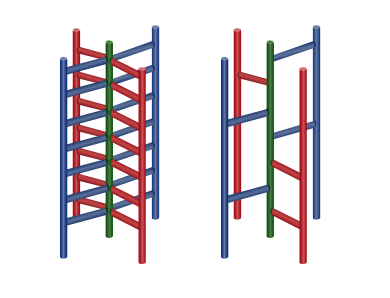Preparando MOJI
Manao is working for a construction company. Recently, an order came to build wall bars in a children's park. Manao was commissioned to develop a plan of construction, which will enable the company to save the most money.
After reviewing the formal specifications for the wall bars, Manao discovered a number of controversial requirements and decided to treat them to the company's advantage. His resulting design can be described as follows:
 The figure to the left shows what a common set of wall bars looks like. The figure to the right shows Manao's construction
The figure to the left shows what a common set of wall bars looks like. The figure to the right shows Manao's construction Manao is wondering how many distinct construction designs that satisfy his requirements exist. As this number can be rather large, print the remainder after dividing it by 1000000009 (109 + 9). Two designs are considered distinct if there is such height i, that the bars on the height i in these designs don't stick out in the same direction.
A single line contains two space-separated integers, n and h (1 ≤ n ≤ 1000, 1 ≤ h ≤ min(n, 30)).
In a single line print the remainder after dividing the number of designs by 1000000009 (109 + 9).
5 1
4
4 2
148
4 3
256
5 2
376
Consider several designs for h = 2. A design with the first bar sticked out in direction d1, the second — in direction d2 and so on (1 ≤ di ≤ 4) is denoted as string d1d2...dn.
Design "1231" (the first three bars are sticked out in different directions, the last one — in the same as first). A child can reach neither the bar at height 3 nor the bar at height 4.
Design "414141". A child can reach the bar at height 5. To do this, he should first climb at the first bar, then at the third and then at the fifth one. He can also reach bar at height 6 by the route second → fourth → sixth bars.
Design "123333". The child can't reach the upper two bars.
Design "323323". The bar at height 6 can be reached by the following route: first → third → fourth → sixth bars.